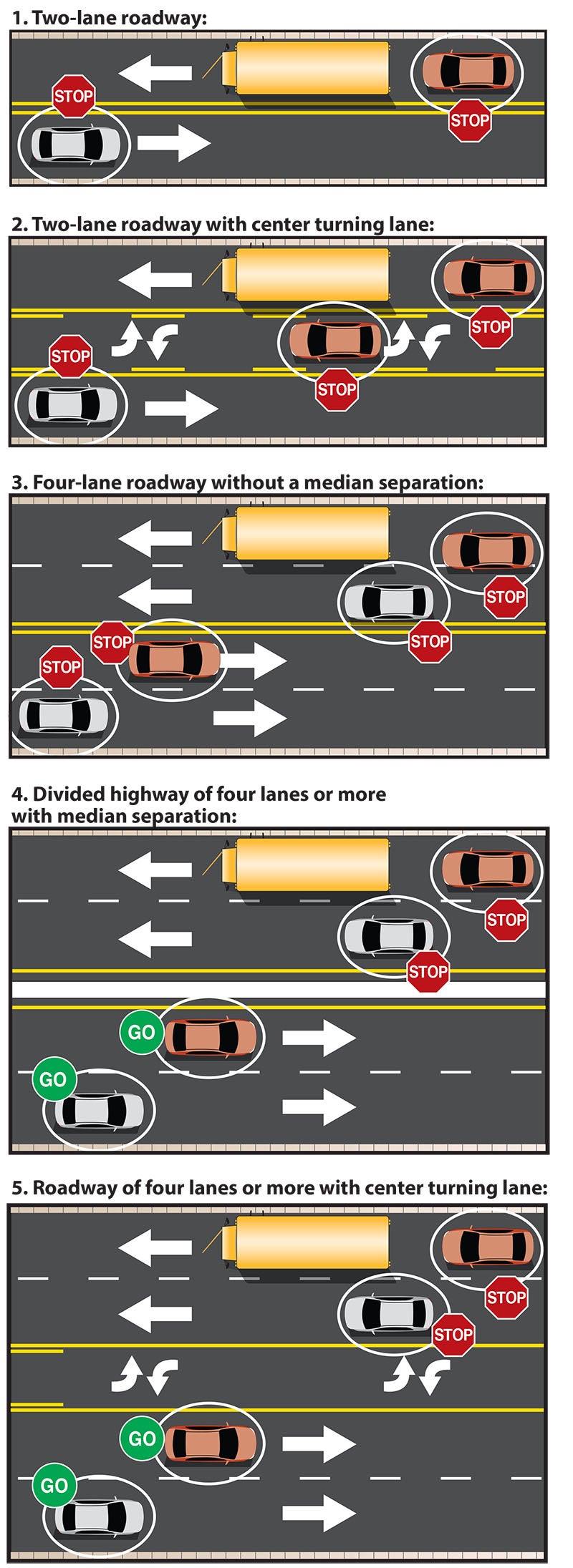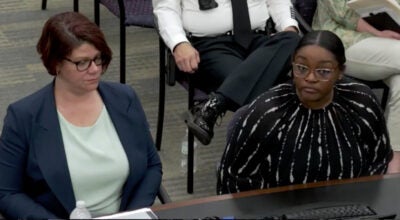Area troopers, sheriff warn motorists, students about school bus safety
Published 12:05 am Sunday, November 4, 2018

- Graphic by Andy Mooney, Salisbury Post
By Shavonne Walker
shavonne.walker@salisburypost.com
In one week five children were killed and seven others were injured across the United States — all while trying to cross the road to board the school bus. These incidents highlight the need for school bus stop safety, especially now that it is still dark while children board the school bus in the mornings.
According to the National Highway Traffic Safety Administration (NHTSA), in recent years there was an average of 131 fatalities in school transportation-related traffic crashes each year and more school-aged pedestrians have been killed during the hours of 7 a.m. to 8 a.m. and 3 p.m. to 4 p.m. than any other time of day.
N.C. Highway Patrol Trooper Ned Moultrie asked that both motorists and bus drivers be focused, he said since accidents can be prevented if motorists and bus drivers do what they are supposed to do.
“Nobody wants to harm a child. Always exercise caution,” Moultrie said.
He said most schools have policies that younger children must have an adult with them at the bus stop.
Although school buses represent the safest form of highway transportation, there are a number of safety factors of which both student and drivers should be aware.
Students
• Stay on your side of the road, 12 feet away from traffic
• Wait for the bus to stop and the stop arm to extend. The driver will be holding his left palm up for you to wait for traffic to stop.
• Stop and look for traffic both ways, then check again. When it is OK, the driver will give you a thumbs up and then point in the direction you will walk to cross the street.
• Look for moving traffic both ways as you walk directly across the road.
• Cross 12 feet in front of the bus in full view of your driver. Be careful in the danger zone and board the bus without delay.
• If a car is moving, students should not step into the road.
• Pay attention at the stop. Take out earbuds and don’t talk or text on the phone.
Moultrie said even though bus drivers may implement hand signals, students should still be careful and look before crossing themselves.
If the student doesn’t think it’s safe to cross they should wait, Moultrie recommends.
The N.C. Highway Traffic Safety Administration recommends that students not stop to pick up something they may have dropped. Students should tell the bus driver or wait until the bus has driven off to avoid not being seen by the driver.
When students are exiting the bus they should look for traffic in all directions before stepping off the bus. They should also walk in full view of the driver, beyond the extended crossing arm.
The driver may hold up his or her palm up to wait until all traffic has stopped. When it’s OK to cross, the driver may give the student a thumbs up and then point in the direction to walk across the street.
“Children are often eager to get off the school bus because they are excited to tell their parents about all of the fun they had at school that day,” said Sheriff Kevin Auten.
“It is crucial that parents re-enforce the school bus safety rules children learn at school,” Auten said.
Sheriff Auten also suggests that parents drive their child’s bus route with them to practice the proper safety precautions they can take to help ensure their child enjoys a safe ride to and from school.
Trooper A. Bahadur suggests parents adhere a reflective tape onto a child’s backpack to make them more visible early in the morning when it is still dark.
He said as frustrating as it can be waiting behind a school bus, the safest thing to do is obey the law and every time the bus stops, they need to stop, Bahadur said.
There is a North Carolina program in each county where troopers are asked observe school buses typically in the area they patrol and if they see any motorists disobeying the laws the trooper will make a traffic stop.
Traffic laws
• A two-lane road, all traffic must stop.
• A two-lane roadway with a center turning lane, all traffic in both directions must stop.
• A four-lane road without a median separation, all traffic in both directions must stop.
• A divided highway of four lanes or more with a median separation, only traffic following the bus must stop.
• A roadway with four lanes or more with a center turning lane, only traffic following the bus must stop.
Contact reporter Shavonne Walker at 704-797-4253.
More News



